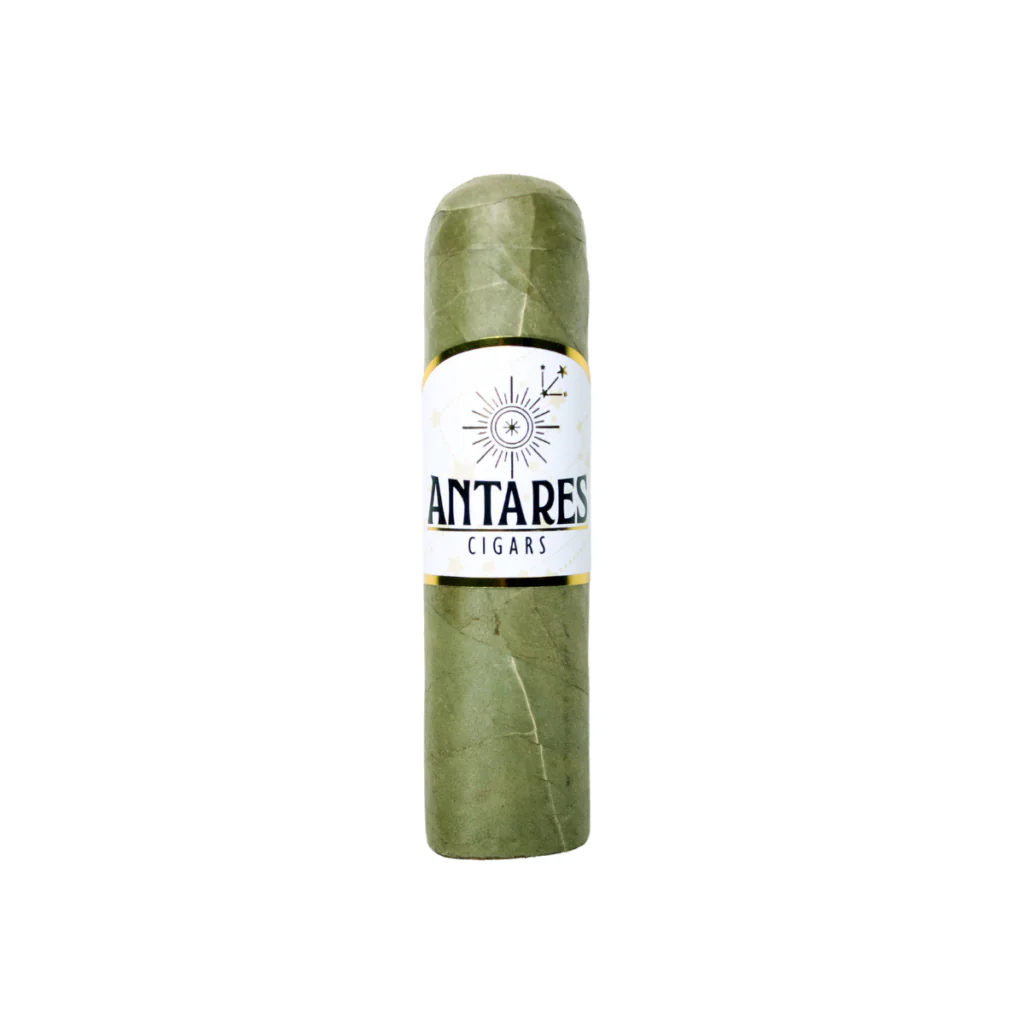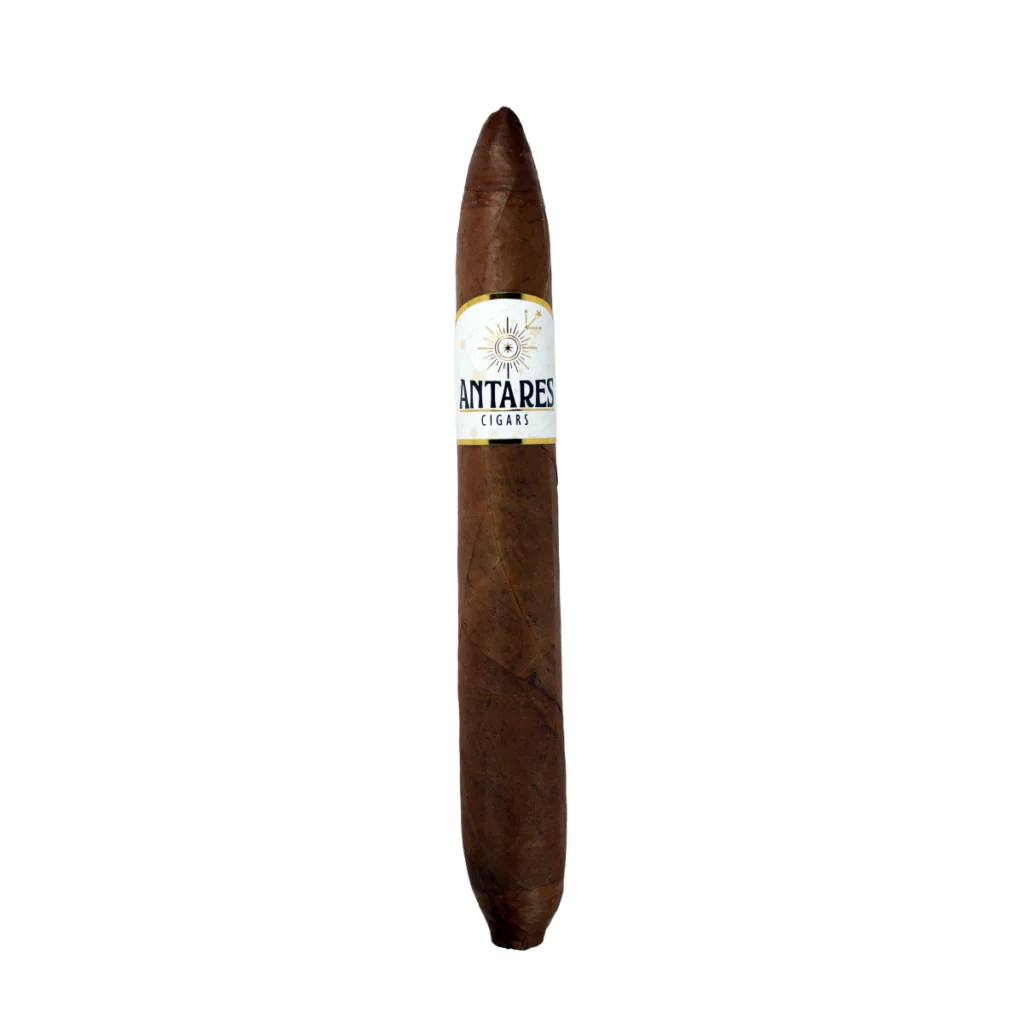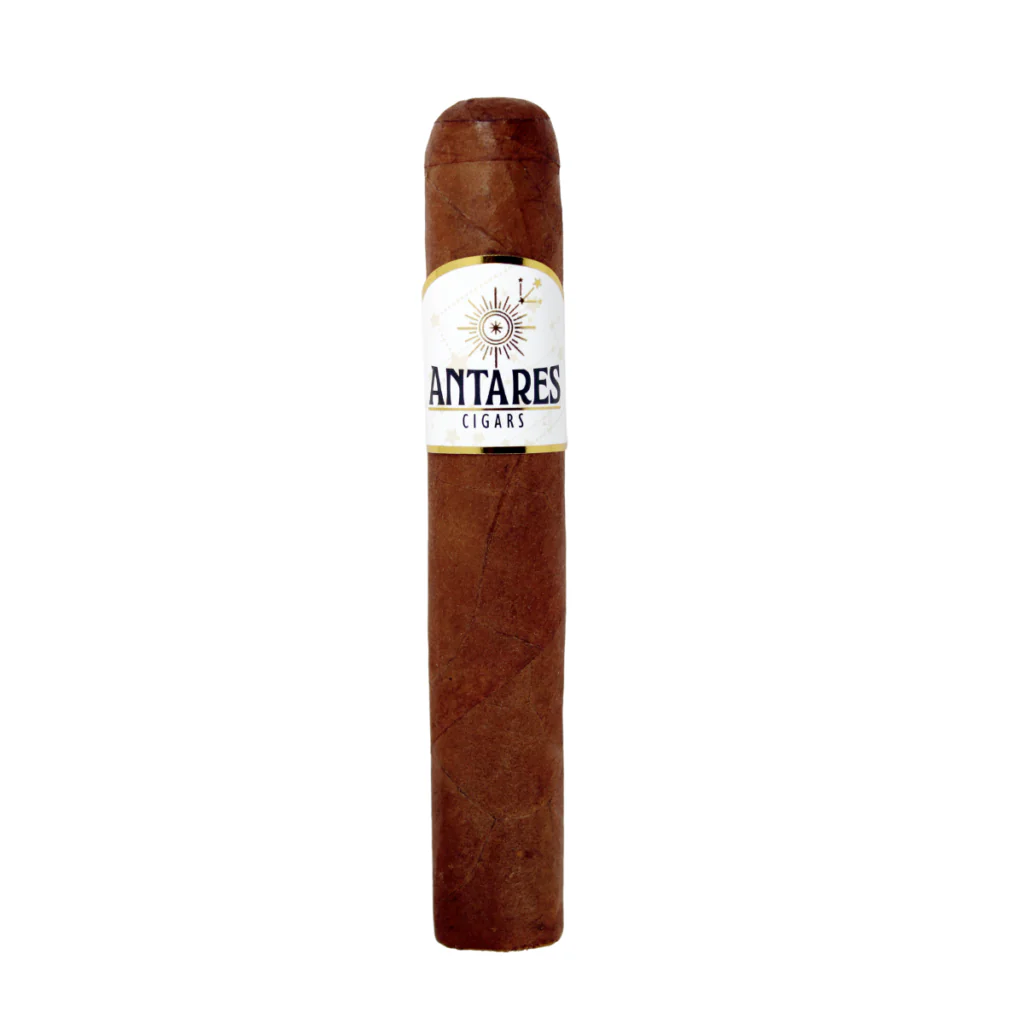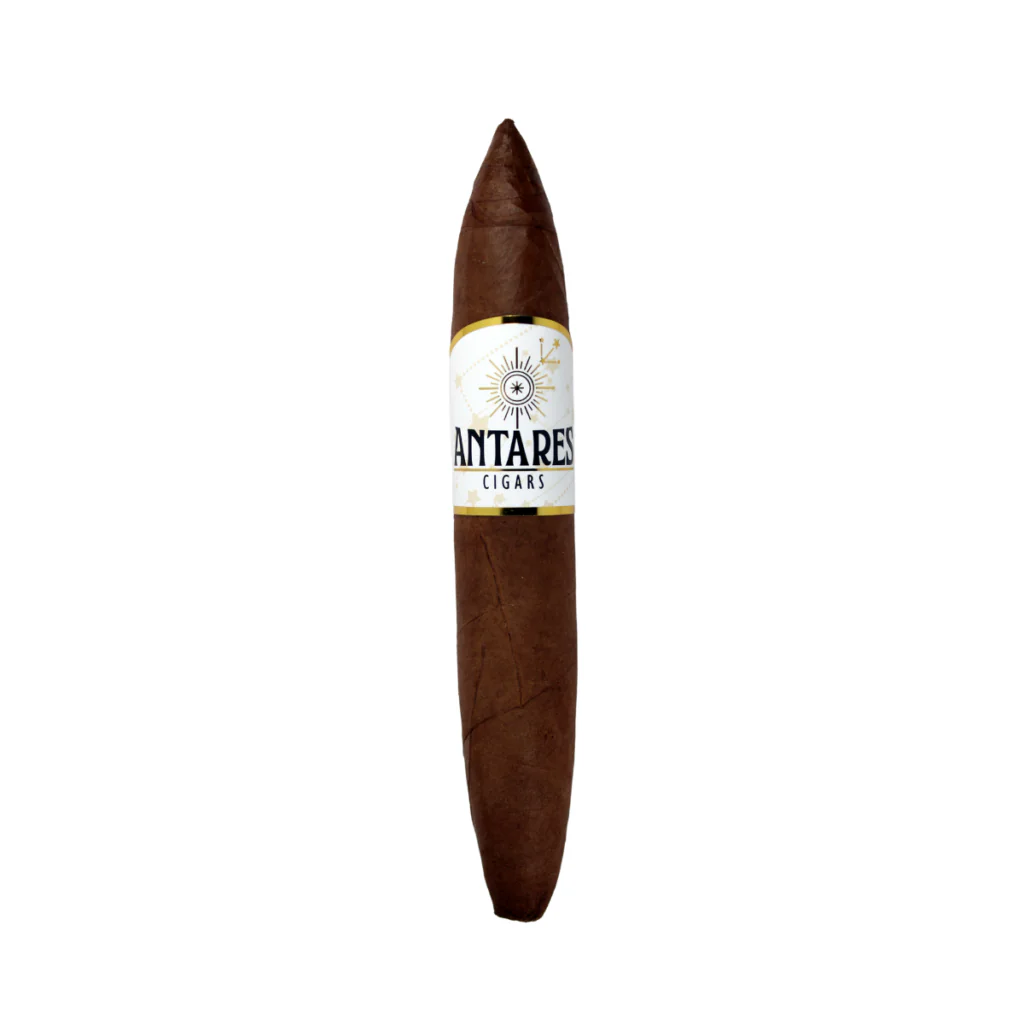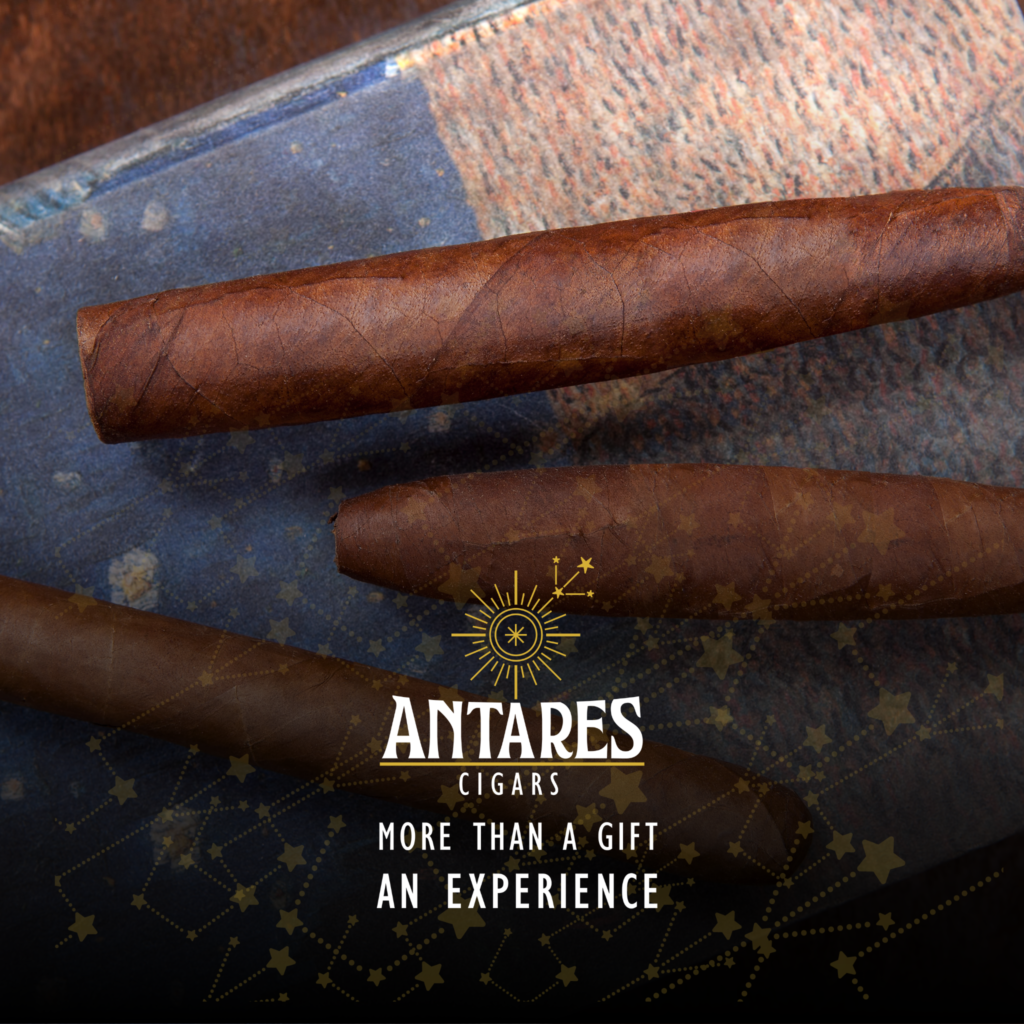
cigars
-
- Select options This product has multiple variants. The options may be chosen on the product page
Rated 0 out of 5 -
- Select options This product has multiple variants. The options may be chosen on the product page
Rated 0 out of 5 -
- Select options This product has multiple variants. The options may be chosen on the product page
Rated 0 out of 5 -
- Select options This product has multiple variants. The options may be chosen on the product page
Rated 0 out of 5 -
- Select options This product has multiple variants. The options may be chosen on the product page
Rated 0 out of 5 -
- Select options This product has multiple variants. The options may be chosen on the product page
Rated 0 out of 5
Live Cigar Rolling: A Touch of Tradition for Your Event
Impress your guests with the artistry of live cigar rolling. Our skilled rollers craft premium cigars on-site, creating a sophisticated and engaging experience perfect for weddings, celebrations, and corporate events.
Live Cigar Roller
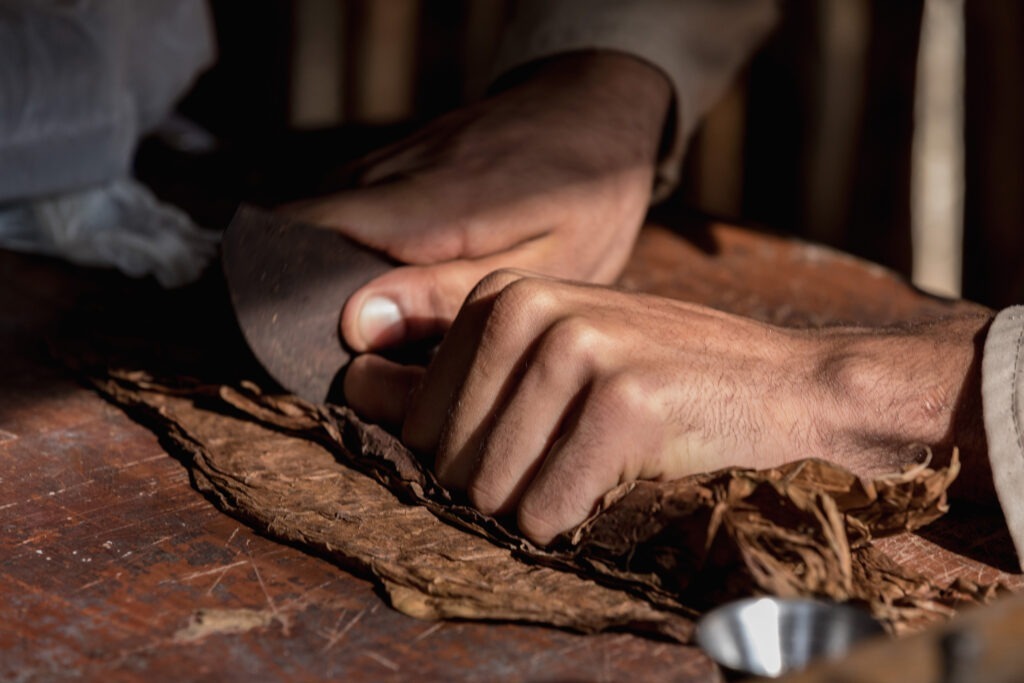
Elite
$500
- 1 Hour Live Rolling
- 25 Hand-Rolled Cigars
- 25 Pre-Rolled Cigars
- Personalized Bands
- Cigar Sommelier Host
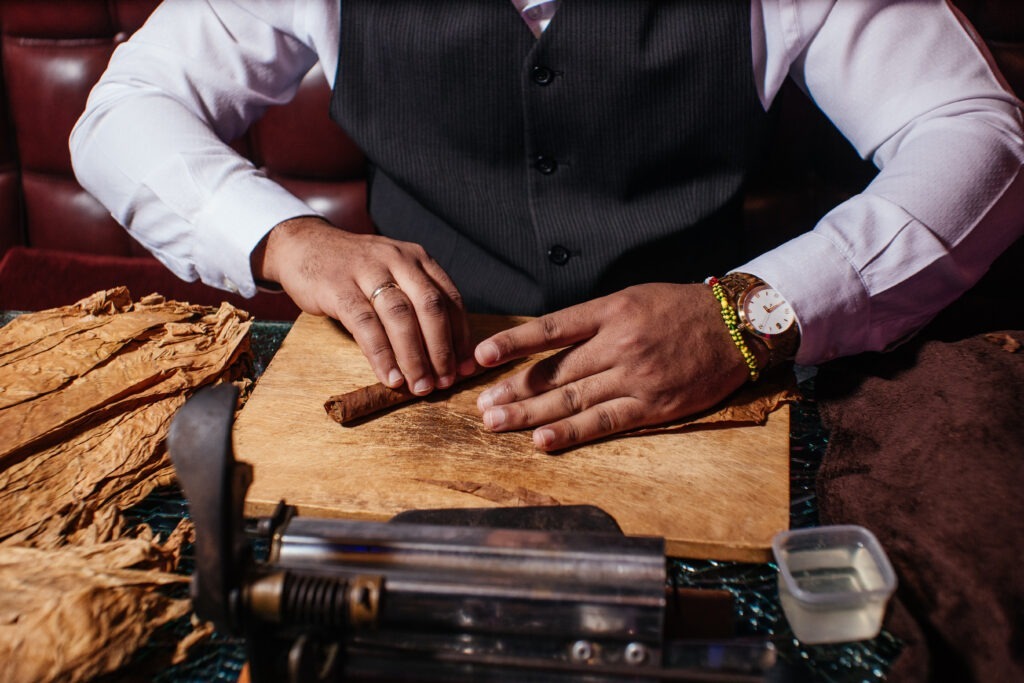
Regal
$750
- 2 Hour Live Rolling
- 25 Hand-Rolled Cigars
- 25 Pre-Rolled Cigars
- Personalized Bands
- Cigar Sommelier Host

Imperial
$1,500
- 4 Hour Live Rolling
- 75 Hand-Rolled Cigars
- 25 Pre-Rolled Cigars
- Personalized Bands
- Cigar Sommelier Host
The Essence of Estelí: Premium Nicaraguan Cigars with Cuban Heritage
Our collection, made from Cuban-seed tobacco, delivers a rich blend of tradition, craftsmanship, and bold flavors. Perfect for discerning aficionados seeking authentic excellence.
Special editions
-
- Select options This product has multiple variants. The options may be chosen on the product page
Rated 0 out of 5 -
- Select options This product has multiple variants. The options may be chosen on the product page
Rated 0 out of 5 -
- Select options This product has multiple variants. The options may be chosen on the product page
Rated 0 out of 5 -
- Select options This product has multiple variants. The options may be chosen on the product page
Rated 0 out of 5 -
- Select options This product has multiple variants. The options may be chosen on the product page
Rated 0 out of 5 -
- Select options This product has multiple variants. The options may be chosen on the product page
Rated 0 out of 5
Latest Blogs
December 11, 2024A Historical Overview
Cigars have long been associated with wealth, power, and sophistication. Their journey from a simple rolled tobacco leaf to a symbol of luxury began centuries ago in the Americas, where indigenous people smoked tobacco in ceremonies. When European explorers brought cigars back to the Old World, they quickly became a status symbol among the elite.
The Role of Premium Materials and Craftsmanship
The quality of a cigar often reflects its luxury status. Hand-rolled cigars made from premium tobacco, grown in regions like Cuba, Nicaragua, and the Dominican Republic, are revered for their superior flavor and craftsmanship. The meticulous process of creating these cigars—from selecting the finest leaves to aging them to perfection—adds to their allure.
Pop Culture and Cigars
Movies and media have played a significant role in cementing cigars as a symbol of luxury. From Hollywood actors to political leaders, cigars are often portrayed as the choice accessory of successful individuals. For example, Winston Churchill’s love for cigars made them an integral part of his public image.
Modern-Day Symbolism
Today, cigars are not just for the ultra-wealthy. They have become a way to celebrate milestones, socialize, and enjoy life’s finer moments. The act of smoking a cigar—with its slow pace and intricate rituals—embodies leisure and sophistication.
Why Cigars Remain Iconic
The enduring appeal of cigars lies in their ability to evoke a sense of tradition and exclusivity. For enthusiasts, cigars represent more than a product; they are a lifestyle.
Recommended for You
Select options
This product has multiple variants. The options may be chosen on the product page
Nub
Rated 0 out of 5
Select options
This product has multiple variants. The options may be chosen on the product page
Salomon
Rated 0 out of 5
Select options
This product has multiple variants. The options may be chosen on the product page
Toro
Rated 0 out of 5
Select options
This product has multiple variants. The options may be chosen on the product page
Robusto
Rated 0 out of 5
Select options
This product has multiple variants. The options may be chosen on the product page
Perfecto
Rated 0 out of 5
Select options
This product has multiple variants. The options may be chosen on the product page
Behike
Rated 0 out of 5 [...]
December 9, 2024Cigar smoking has a rich and storied history that dates back thousands of years, deeply intertwined with the cultural and social traditions of humanity. Its journey from ancient rituals to a modern symbol of sophistication and leisure is a testament to the enduring allure of tobacco and its cultural significance.Ancient Beginnings: The Indigenous Roots of Tobacco UseThe origins of cigar smoking trace back to the indigenous peoples of the Americas, where tobacco played a central role in daily life, spirituality, and tradition. Archaeological evidence suggests that native tribes, such as the Taíno people of the Caribbean and the Mayans in Mesoamerica, were among the first to cultivate and use tobacco. These communities smoked tobacco by rolling it in leaves or using ceremonial pipes.Tobacco held a sacred status in many indigenous cultures, often used in rituals to communicate with the spiritual world or as offerings to deities. It was also believed to have medicinal properties, used in healing practices to alleviate pain, ward off evil spirits, or promote well-being. The Mayans even depicted tobacco use in their art, with ancient carvings showing individuals smoking rolled tobacco leaves.Tobacco’s Arrival in EuropeThe global journey of tobacco began in 1492, when Christopher Columbus and his crew arrived in the Americas. The explorers observed the indigenous practice of smoking tobacco and brought the plant back to Europe. Initially, tobacco was viewed with curiosity and was primarily used for medicinal purposes. Physicians and herbalists of the time believed it had healing properties, prescribing it to treat ailments such as headaches, toothaches, and respiratory issues.By the mid-16th century, tobacco’s recreational appeal began to grow. Smoking evolved into a popular pastime among European elites, with the Spanish and Portuguese leading the way in cultivating and trading tobacco. It wasn’t long before the practice spread across the continent, reaching England, France, and beyond.The Birth of the CigarThe cigar, as we recognize it today, began to take shape in the 17th century. While the exact origin is debated, many credit Spanish influence, particularly in Cuba, for refining the art of cigar-making. Cuba’s fertile soil and favorable climate created the perfect conditions for growing premium tobacco, establishing the island as a hub for high-quality cigars.Initially, cigars were handmade and reserved for the wealthy due to their labor-intensive production. Smoking a cigar became a status symbol, associated with power, affluence, and sophistication. By the 18th and 19th centuries, cigar culture flourished, with factories employing skilled rollers to meet the growing demand.Cigars in Modern CultureToday, cigars occupy a unique space in global culture. They are synonymous with luxury and celebration, often associated with milestones, achievements, and leisure. Beyond their symbolic value, cigars are a craft, with enthusiasts appreciating the artistry involved in their production—from the careful cultivation of tobacco to the meticulous rolling and aging process.The Global Cigar IndustryCigar production remains a thriving industry, with renowned regions like Cuba, the Dominican Republic, Nicaragua, and Honduras leading the market. Each region offers distinct flavors and characteristics, reflecting the soil, climate, and craftsmanship unique to its locale.Premium cigars, often referred to as “handmade cigars,” are celebrated for their complexity and quality. They’re a testament to centuries of tradition and innovation, with master blenders and rollers dedicated to preserving the heritage of cigar-making.Cigar Smoking Etiquette and CultureCigar smoking has also cultivated its own etiquette and traditions. Whether enjoyed in a cigar lounge or during a private gathering, smoking a cigar is often seen as a social ritual. Enthusiasts emphasize the importance of savoring the experience, appreciating the flavor, aroma, and craftsmanship of each cigar.ConclusionThe history of cigars is a journey through time, culture, and craftsmanship. From their sacred role in ancient rituals to their modern-day status as a symbol of luxury, cigars have left an indelible mark on human history. Whether you are a seasoned aficionado or a curious beginner, exploring the world of cigars is a celebration of tradition, artistry, and the enduring human spirit.Recommended for You
Select options
This product has multiple variants. The options may be chosen on the product page
NubRated 0 out of 5
Select options
This product has multiple variants. The options may be chosen on the product page
SalomonRated 0 out of 5
Select options
This product has multiple variants. The options may be chosen on the product page
ToroRated 0 out of 5
Select options
This product has multiple variants. The options may be chosen on the product page
RobustoRated 0 out of 5
Select options
This product has multiple variants. The options may be chosen on the product page
PerfectoRated 0 out of 5
Select options
This product has multiple variants. The options may be chosen on the product page
BehikeRated 0 out of 5 [...]
July 20, 2024While it’s uncommon, even with a premium cigar selection, occasional issues may arise with your cigar. These issues could stem from the cigar’s construction or storage conditions. Depending on the nature of the problem, some issues may be remedied, while others may render the cigar unsalvageable, necessitating disposal. Below, we outline common cigar issues and how to address them. Uneven Burn: An uneven burn is among the most prevalent issues encountered with cigars. This problem can arise from either a fault in the rolling process or an inadequate lighting technique. While some cigars may be beyond repair, many can be rectified with patience and skillful use of a lighter. Add picture of different burn issues. Canoeing, characterized by uneven burning where one side of the cigar burns faster than the other, is a common burn issue encountered by cigar enthusiasts. This imbalance can stem from various factors, such as an off-center ligero leaf or inadequate toasting during lighting, resulting in one side being more fully lit than the other. Remedying a canoed cigar is relatively straightforward. By slowing down your smoking pace, you allow the cigar to cool down, enabling it to correct itself. Remember, the faster you smoke, the hotter the cigar burns, exacerbating the uneven burn. Slowing your puffing rhythm affords the cigar the opportunity to rebalance its burn. If the issue persists, it may be necessary to take further action. Pause smoking and allow the cigar to cool completely before using a cigar cutter to clip the end. Blow gently through the cigar to expel any accumulated chemicals before properly relighting it. This method helps reset the burn and restore a more even smoking experience. Cigar Beetle: Cigar beetles pose a significant threat to your cigar collection, manifesting as pinprick holes on the surface of cigars or leaving behind black dust in your humidor. Unfortunately, once cigars are affected by these pests, they are irreversibly damaged and should be promptly discarded.To safeguard your collection against cigar beetles, it’s crucial to conduct a thorough inspection of new cigars before introducing them to your humidor. This proactive measure helps prevent the spread of beetles within your collection. Furthermore, maintaining a consistent temperature of 21 degrees Celsius (70 degrees Fahrenheit) in your humidor is essential for deterring cigar beetles. Fluctuations in temperature can create an environment conducive to beetle infestation, making temperature regulation a key aspect of humidor maintenance. By adhering to these preventive measures, you can protect your cigars from the devastating effects of cigar beetles and preserve their quality for future enjoyment.
Recommended for You
Select options
This product has multiple variants. The options may be chosen on the product page
Nub
Rated 0 out of 5
Select options
This product has multiple variants. The options may be chosen on the product page
Salomon
Rated 0 out of 5
Select options
This product has multiple variants. The options may be chosen on the product page
Toro
Rated 0 out of 5
Select options
This product has multiple variants. The options may be chosen on the product page
Robusto
Rated 0 out of 5
Select options
This product has multiple variants. The options may be chosen on the product page
Perfecto
Rated 0 out of 5
Select options
This product has multiple variants. The options may be chosen on the product page
Behike
Rated 0 out of 5 [...]
July 20, 2024Aging cigars is a practice embraced by many enthusiasts seeking to elevate their smoking experience. While it’s true that most cigars are already aged by the manufacturer, with the tobacco undergoing aging processes before and after rolling, some aficionados still enjoy aging them further for personal enjoyment and experimentation. Rather than aging individual cigars, it’s commonly recommended to purchase a box of cigars and allow them to age collectively in a humidor. Sampling a cigar from the box upon purchase and then periodically smoking subsequent cigars over the course of several months or years (depending on the quantity) allows for a fascinating exploration of how flavors and aromas evolve over time. Keeping a journal to record notes about each smoking experience enables enthusiasts to track the development of their aged cigars. This process provides valuable insights into how aging affects the flavor profile and overall smoking enjoyment, adding an element of discovery and appreciation to the cigar aficionado’s journey.
Recommended for You
Select options
This product has multiple variants. The options may be chosen on the product page
Nub
Rated 0 out of 5
Select options
This product has multiple variants. The options may be chosen on the product page
Salomon
Rated 0 out of 5
Select options
This product has multiple variants. The options may be chosen on the product page
Toro
Rated 0 out of 5
Select options
This product has multiple variants. The options may be chosen on the product page
Robusto
Rated 0 out of 5
Select options
This product has multiple variants. The options may be chosen on the product page
Perfecto
Rated 0 out of 5
Select options
This product has multiple variants. The options may be chosen on the product page
Behike
Rated 0 out of 5 [...]
July 20, 2024If you’re planning to sample a cigar shortly after purchase, there’s minimal concern regarding storage. Many individual cigars now come in tubes, providing an ideal storage solution until you’re ready to indulge. These tubes serve a dual purpose, not only safeguarding the cigar but also offering a convenient carry option for future use. Alternatively, cigars may arrive in clear plastic wrappers, suitable for short-term storage if kept in a cool, dry environment and intended for consumption within a couple of days. Investing in a Humidor: For those intending to delve into cigar smoking more regularly, a humidor is a wise investment to maintain cigar quality. Without proper storage, cigars are susceptible to drying out, leading to issues such as cracks, wrapper peeling, flavor loss, and accelerated burn rates. Humidors play a crucial role in preserving cigar freshness by regulating humidity levels, ensuring an optimal smoking experience. This is particularly essential as tobacco-growing regions like Cuba maintain higher humidity levels than regions like the UK. A humidor is indispensable for keeping cigars fresh and maintaining the ideal humidity level for an enjoyable smoke. Here’s a guide on effectively utilizing a humidor to preserve your cigar collection: Selecting the Right Humidor:Opt for a high-quality humidor that suits the size of your cigar collection. We recommend choosing one lined with Spanish cedar, known for its moisture-regulating properties and ability to enhance flavor. Maintaining Humidity Levels:Ensure the humidity within your humidor is set to the optimal range of 65-70%. Periodically monitor the humidity levels and make adjustments as necessary, especially if your cigars are showing signs of becoming too dry or too moist. Proper Sizing:Maintain an appropriate balance of space within your humidor. Avoid overcrowding, as this can impede airflow and affect humidity distribution. Similarly, refrain from leaving excessive room, as this can lead to fluctuations in humidity levels. If your humidor is underutilized, consider filling any gaps with additional cedar wood or cigar boxes. Conversely, if space becomes limited due to an expanding collection, it may be time to consider upgrading to a larger humidor or acquiring a supplementary storage solution. Routine Maintenance: Regularly tend to your humidor to ensure optimal performance. This includes periodically refilling the humidification system with water and inspecting it for any signs of wear or malfunction. By staying vigilant with maintenance tasks, you can prolong the life of your humidor and safeguard the quality of your cigars.
Recommended for You
Select options
This product has multiple variants. The options may be chosen on the product page
Nub
Rated 0 out of 5
Select options
This product has multiple variants. The options may be chosen on the product page
Salomon
Rated 0 out of 5
Select options
This product has multiple variants. The options may be chosen on the product page
Toro
Rated 0 out of 5
Select options
This product has multiple variants. The options may be chosen on the product page
Robusto
Rated 0 out of 5
Select options
This product has multiple variants. The options may be chosen on the product page
Perfecto
Rated 0 out of 5
Select options
This product has multiple variants. The options may be chosen on the product page
Behike
Rated 0 out of 5 [...]
July 20, 2024While it may seem trivial to discuss a “right” and “wrong” way to taste a cigar, refining your tasting technique can significantly enhance your smoking experience. In the realm of cigars, mastering the art of tasting entails developing the ability to discern various flavors and uncover the subtle nuances within your cigar. There are several methods to effectively taste a cigar:
Before lighting the cigar, take a moment to smell and taste it. Place the unlit cigar in your mouth and pay attention to any prominent flavor notes that stand out.
Pace yourself while smoking to prevent the cigar from overheating, which can compromise its flavor profile.
Allow the smoke to linger in your mouth, allowing the flavors to fully develop and leaving you with a more pronounced aftertaste.
Try retro-haling the cigar by exhaling the smoke through your nose. This technique can reveal additional flavor notes and aromas that may not be detectable through the mouth alone.
Maintain a fresh palate by avoiding strong-tasting foods or beverages before and during your cigar-smoking session. This ensures that your taste buds remain receptive to the subtle complexities of the cigar’s flavor profile.
By incorporating these techniques into your cigar-tasting routine, you can unlock a world of flavors and aromas, transforming your smoking experience into a truly sensory journey.
Recommended for You
Select options
This product has multiple variants. The options may be chosen on the product page
Nub
Rated 0 out of 5
Select options
This product has multiple variants. The options may be chosen on the product page
Salomon
Rated 0 out of 5
Select options
This product has multiple variants. The options may be chosen on the product page
Toro
Rated 0 out of 5
Select options
This product has multiple variants. The options may be chosen on the product page
Robusto
Rated 0 out of 5
Select options
This product has multiple variants. The options may be chosen on the product page
Perfecto
Rated 0 out of 5
Select options
This product has multiple variants. The options may be chosen on the product page
Behike
Rated 0 out of 5 [...]
July 1, 2024Cigars have a tendency to extinguish themselves if left unattended, necessitating occasional relighting to maintain an even burn. To relight a cigar, position the flame just in front of the foot and gently blow through the cigar to clear any trapped ash. Then, proceed to repeat the lighting process. However, it’s advisable to strive for maintaining the cigar’s combustion on its own by taking a puff approximately every minute. Constantly relighting the cigar can alter its flavor profile, leading to a less enjoyable smoking experience. Furthermore, it’s important to note that relighting a cigar is only suitable if it has been recently smoked. Attempting to relight a cigar that has been extinguished for an extended period may result in an unpleasant taste. In such cases, it’s preferable to start with a fresh cigar rather than attempting to salvage the extinguished one.
Recommended for You
Select options
This product has multiple variants. The options may be chosen on the product page
Nub
Rated 0 out of 5
Select options
This product has multiple variants. The options may be chosen on the product page
Salomon
Rated 0 out of 5
Select options
This product has multiple variants. The options may be chosen on the product page
Toro
Rated 0 out of 5
Select options
This product has multiple variants. The options may be chosen on the product page
Robusto
Rated 0 out of 5
Select options
This product has multiple variants. The options may be chosen on the product page
Perfecto
Rated 0 out of 5
Select options
This product has multiple variants. The options may be chosen on the product page
Behike
Rated 0 out of 5 [...]
June 17, 2024Determining when to conclude your cigar-smoking session is a subject that often sparks lively debates among enthusiasts, with personal preferences often outweighing rigid rules. Some smokers argue that the pinnacle of the cigar experience lies within the first half, opting to extinguish their cigars at this point. However, others find this approach wasteful, preferring to leave approximately three-finger widths of the cigar remaining before calling it quits. Alternatively, some smokers choose to conclude their smoking journey upon reaching the cigar band, provided they have left it intact. However, this method can also be wasteful depending on the band’s placement on the cigar. The decision to stop smoking a cigar is also influenced by the cigar’s type. Some cigars tend to become hot and harsh as they burn closer to the nub, diminishing the smoking experience in the latter stages. Conversely, certain cigars maintain their flavor and enjoyment right up until the end, making it worthwhile to persevere. As you delve deeper into the world of cigars and experiment with various blends and brands, you’ll gradually discern which cigars are best enjoyed over a longer duration and which are better left to burn. Ultimately, finding the sweet spot in your cigar-smoking journey is a personal exploration guided by individual tastes and experiences.
Recommended for You
Select options
This product has multiple variants. The options may be chosen on the product page
Nub
Rated 0 out of 5
Select options
This product has multiple variants. The options may be chosen on the product page
Salomon
Rated 0 out of 5
Select options
This product has multiple variants. The options may be chosen on the product page
Toro
Rated 0 out of 5
Select options
This product has multiple variants. The options may be chosen on the product page
Robusto
Rated 0 out of 5
Select options
This product has multiple variants. The options may be chosen on the product page
Perfecto
Rated 0 out of 5
Select options
This product has multiple variants. The options may be chosen on the product page
Behike
Rated 0 out of 5 [...]
June 15, 2024The preferred method for extinguishing a cigar is to allow it to rest in an ashtray and naturally extinguish itself. Unlike cigarettes, cigars should not be stubbed out. Stubbing out a cigar can lead to undesirable consequences, primarily a foul smell caused by the release of oils and tars accumulated during the burning process. This action can result in a lingering, stale odor that detracts from the enjoyment of the smoking experience. Since cigars only burn when actively puffed, simply letting the cigar rest in the ashtray will prompt it to extinguish relatively quickly. However, if time is of the essence and you wish to ensure complete extinguishment, you can immerse the cigar in a non-alcoholic liquid. Although effective, this method is considered less refined and may compromise the cigar’s integrity.
Recommended for You
Select options
This product has multiple variants. The options may be chosen on the product page
Nub
Rated 0 out of 5
Select options
This product has multiple variants. The options may be chosen on the product page
Salomon
Rated 0 out of 5
Select options
This product has multiple variants. The options may be chosen on the product page
Toro
Rated 0 out of 5
Select options
This product has multiple variants. The options may be chosen on the product page
Robusto
Rated 0 out of 5
Select options
This product has multiple variants. The options may be chosen on the product page
Perfecto
Rated 0 out of 5
Select options
This product has multiple variants. The options may be chosen on the product page
Behike
Rated 0 out of 5 [...]
June 10, 2024Mastering the art of cigar smoking requires skill and practice. Do You Inhale Cigars? A fundamental rule of cigar smoking is to refrain from inhaling the smoke. Unlike cigarettes, where inhalation is common practice, cigars contain a dense concentration of tobacco and smoke, making inhalation uncomfortable and potentially harmful. Puffing on a cigar involves drawing smoke into the mouth, holding it momentarily, and then exhaling. This method allows for the enjoyment of the cigar’s flavors and aromas without the need to inhale into the lungs.Slow and Steady Whether you’re a seasoned aficionado or new to the world of cigars, pacing your smoking is essential. Aim to take a puff on the cigar approximately every 60-120 seconds. Smoking too rapidly can cause the cigar to burn too hot, leading to an unpleasant taste and potentially making you feel unwell. Conversely, allowing the cigar to sit idle for extended periods can cause it to extinguish prematurely.Embracing a slow and steady approach is advisable, as it allows the cigar’s flavors to develop and mature while preventing overheating. As the cigar burns past the halfway point and diminishes in size, consider extending the resting period to further enhance the smoking experience and prevent overheating.By adopting a measured approach to cigar smoking, you can fully savor the intricate flavors and nuances of each cigar while ensuring a smooth and enjoyable smoking session.
Recommended for You
Select options
This product has multiple variants. The options may be chosen on the product page
Nub
Rated 0 out of 5
Select options
This product has multiple variants. The options may be chosen on the product page
Salomon
Rated 0 out of 5
Select options
This product has multiple variants. The options may be chosen on the product page
Toro
Rated 0 out of 5
Select options
This product has multiple variants. The options may be chosen on the product page
Robusto
Rated 0 out of 5
Select options
This product has multiple variants. The options may be chosen on the product page
Perfecto
Rated 0 out of 5
Select options
This product has multiple variants. The options may be chosen on the product page
Behike
Rated 0 out of 5 [...]
June 3, 2024Lighting a cigar requires a degree of finesse, but with practice, it will become second nature.Choosing the Right Tool: The first step in lighting a cigar is selecting the appropriate tool for the job. Unlike cigarettes, cigars demand a more refined approach. Consider upgrading from disposable lighters to long cigar matches, a butane lighter, or a torch lighter for a more controlled and even burn.Cigar Lighting Technique: Begin by toasting the foot of the cigar. Hold the cigar at a 45-degree angle, ensuring it is slightly away from the flame but close enough to gently toast. This step differs from simply igniting the cigar; toasting ensures that the wrapper and binder also begin to burn along with the filler. Take a few gentle puffs on the cigar to verify that it is burning evenly. The foot should exhibit a white ash, indicating a successful toast. Now, move the flame to about half an inch away from the foot to fully ignite the filler. Draw in air through the cigar, allowing the flame to catch hold of the foot. Upon successfully lighting the cigar, exhale a puff of smoke. It’s advisable to wait briefly, allowing the burn to stabilize and ensure an even burn. Some cigar brands, especially those containing oily ligero tobacco, may require additional toasting to achieve an optimal burn. Patience and attention to detail are key when lighting a cigar, ensuring a pleasurable smoking experience from start to finish.
Recommended for You
Select options
This product has multiple variants. The options may be chosen on the product page
Nub
Rated 0 out of 5
Select options
This product has multiple variants. The options may be chosen on the product page
Salomon
Rated 0 out of 5
Select options
This product has multiple variants. The options may be chosen on the product page
Toro
Rated 0 out of 5
Select options
This product has multiple variants. The options may be chosen on the product page
Robusto
Rated 0 out of 5
Select options
This product has multiple variants. The options may be chosen on the product page
Perfecto
Rated 0 out of 5
Select options
This product has multiple variants. The options may be chosen on the product page
Behike
Rated 0 out of 5 [...]
May 27, 2024The debate over whether to remove the cigar band is a topic that sparks discussions among even the most seasoned aficionados. For beginners, it’s perfectly normal to feel uncertain about the protocol surrounding band removal. There are valid arguments both for and against removing the band.Arguments for Removing the Band: One primary reason for removing the band is to prevent it from burning during smoking. If the band catches fire, it can impart an unpleasant burnt paper taste to the cigar, detracting from the overall smoking experience. Thus, some smokers opt to remove the band as a precautionary measure to avoid this issue.Arguments Against Removing the Band: Conversely, the band is typically attached to the cigar using a small amount of gum adhesive. Occasionally, excessive adhesive is applied, causing the band to adhere tightly to the wrapper leaf. Removing such a band may inadvertently strip away a portion of the wrapper, potentially affecting the cigar’s structural integrity and smoking quality.A Suggested Approach: A practical approach suggested by many enthusiasts is to begin smoking the cigar for a few minutes before attempting to remove the band. The heat generated by the cigar softens the gum adhesive, making it easier to detach the band without causing damage to the wrapper. This method minimizes the risk of wrapper damage while allowing for a smoother band removal process.Navigating the decision to remove or retain the band is a personal choice, influenced by individual preferences and experiences. As you explore the world of cigar smoking, experimenting with different approaches will help you determine what works best for you.
Recommended for You
Select options
This product has multiple variants. The options may be chosen on the product page
Nub
Rated 0 out of 5
Select options
This product has multiple variants. The options may be chosen on the product page
Salomon
Rated 0 out of 5
Select options
This product has multiple variants. The options may be chosen on the product page
Toro
Rated 0 out of 5
Select options
This product has multiple variants. The options may be chosen on the product page
Robusto
Rated 0 out of 5
Select options
This product has multiple variants. The options may be chosen on the product page
Perfecto
Rated 0 out of 5
Select options
This product has multiple variants. The options may be chosen on the product page
Behike
Rated 0 out of 5 [...]
May 21, 2024Demonstrating polite behavior and a certain degree of decorum ensures a comfortable and enjoyable experience for everyone. Cigar etiquette covers many aspects of the cigar smoking experience, from lighting your stick correctly to putting out your stogie. Being mindful of your behavior and respectful of others will quickly endear you to smokers at all levels of experience. By adhering to these rules and traditions, you’ll evolve into a refined and well-educated cigar smoker representing the cigar world like the classy person you are. Remember that, like everyone else, you’re there to enjoy yourself and appreciate one of America’s most popular pastimes. Take the time to learn the essential cigar etiquette tips every smoker needs to know. Take Your Time When Smoking a CigarSmoking a cigar is more akin to running a marathon than a sprint. There are no accolades for finishing your stogie in record time, and such haste is generally frowned upon within cigar aficionado circles. Rushing through a cigar is a common mistake made by beginners, resulting in accelerated burning of the tobacco leaves and leaving behind a bitter taste.To fully appreciate the experience, it’s best to puff on your cigar at intervals of about a minute. This allows for a consistent burn and gives the cigar time to cool, ensuring you can savor the blend of aromas and flavors. Cigars are crafted to be enjoyed and savored, making it advisable for first-time smokers to keep a glass of water nearby to stay hydrated. Avoid These Common MistakesWhile cigars can be enjoyed with a variety of beverages, dipping your cigar into your drink is strongly discouraged. Not only does this fail to enhance the flavor, but it also introduces ash into your beverage. Excessive moisture from dipping can also impede the cigar’s draw.Infused cigars, where flavors are incorporated into the blend, do exist. However, traditional cigars are meticulously crafted by master blenders to be enjoyed as they are. Reserve the dunking for tea and biscuits. Mind Your AshAttempting to maintain an excessively long ash is not recommended. Besides the risk of getting “ashed” – with flakes and smudges on your clothes – an overly long ash can be unwieldy. While ash does help regulate smoke temperature, it should ideally not exceed an inch. When the time is right, gently tap your cigar into an ashtray to prevent any mishaps. End GracefullyStubbing out a cigar prematurely is considered amateurish. Instead, allow the cigar to extinguish on its own by placing it on the edge of the ashtray. Rekindle with CareIf your cigar requires relighting, do so delicately, avoiding relighting it while in your mouth. Hold the cigar with your fingertips and lightly toast the end with your lighter, following the same procedure as the initial lighting. Size MattersCutting a cigar in half may seem like a way to extend its life, but it compromises the craftsmanship put into its construction. Choosing an appropriate cigar size is crucial, especially for beginners. If a cigar feels too large, opt for a smaller size rather than cutting it in half. Preserve and RespectIf you find yourself with a half-smoked cigar, refrain from storing it in your humidor. Instead, let it go out naturally, trim the ash, and store it in a ziplock bag for no more than a day to preserve its integrity. Etiquette in Cigar LoungesCigar lounges provide a sanctuary for enthusiasts to enjoy premium cigars. It’s essential to respect the establishment’s dress code and purchase cigars from the lounge rather than bringing your own. Other general rules of etiquette, such as respecting personal space and preferences, apply both inside and outside cigar lounges.By adhering to these guidelines on cigar etiquette, you can ensure a pleasant experience not only for yourself but also for those around you. While cigar smoking is a personal indulgence, it’s one that can be enjoyed in the company of others when approached with consideration and respect.
Recommended for You
Select options
This product has multiple variants. The options may be chosen on the product page
Nub
Rated 0 out of 5
Select options
This product has multiple variants. The options may be chosen on the product page
Salomon
Rated 0 out of 5
Select options
This product has multiple variants. The options may be chosen on the product page
Toro
Rated 0 out of 5
Select options
This product has multiple variants. The options may be chosen on the product page
Robusto
Rated 0 out of 5
Select options
This product has multiple variants. The options may be chosen on the product page
Perfecto
Rated 0 out of 5
Select options
This product has multiple variants. The options may be chosen on the product page
Behike
Rated 0 out of 5 [...]
May 20, 2024The initial step in preparing a cigar involves cutting its cap using a specialized cigar cutter. This action is essential as it allows for proper airflow and draw during smoking.It’s crucial to avoid using improvised tools like knives or teeth for this purpose, as they can lead to uneven cuts and damage the cigar. Instead, investing in a quality cigar cutter, such as a guillotine, cigar punch, double-blade cutter, or V-cutter, is imperative. Opting for a cutter with a sharp blade ensures a clean cut without compromising the integrity of the wrapper.A blunt or inferior cutter can potentially harm the cigar’s wrapper, which should ideally remain intact to preserve the smoking experience. The cap, a small piece of wrapper adhered to the cigar’s end, requires only a small portion, around 2-3mm, to be removed using the cutter. Employing a swift, decisive motion during cutting prevents the wrapper from tearing, ensuring a smooth smoking process.For novice smokers, a double-bladed guillotine cutter is often recommended for its simplicity and effectiveness in achieving a clean, precise cut. Investing in the right tools and mastering the cutting technique are essential steps toward enjoying a satisfying cigar experience.
Recommended for You
Select options
This product has multiple variants. The options may be chosen on the product page
Nub
Rated 0 out of 5
Select options
This product has multiple variants. The options may be chosen on the product page
Salomon
Rated 0 out of 5
Select options
This product has multiple variants. The options may be chosen on the product page
Toro
Rated 0 out of 5
Select options
This product has multiple variants. The options may be chosen on the product page
Robusto
Rated 0 out of 5
Select options
This product has multiple variants. The options may be chosen on the product page
Perfecto
Rated 0 out of 5
Select options
This product has multiple variants. The options may be chosen on the product page
Behike
Rated 0 out of 5 [...]
May 17, 2024Coffee stands as a timeless pairing, offering versatility with cigars. Among the classics, the Cuban “café cortado” reigns, boasting a sweet yet robust profile, optionally infused with milk.On the other hand, tea presents itself as an equally favorable companion. Whole leaf teas like Darjeeling often harmonize better than flavored variants, though exploration is key to discovering optimal pairings.Cold non-alcoholic beverages also offer intriguing possibilities. While water is the most analytically neutral choice, the variety of water types yields diverse experiences. From salty mineral waters to sparkling variants, each imparts a distinct flavor profile. Filtered water or rich-tasting still waters like Hawaiian Springs, Qure, or Essentia can yield excellent results.For those with a penchant for sodas, options like cola are viable, but it’s essential to consider the impact on the smoking experience. The high sweetness, carbonation, and low pH of soda can significantly alter the flavor dynamics, so personal taste preferences should guide your selection.
Recommended for You
Select options
This product has multiple variants. The options may be chosen on the product page
Nub
Rated 0 out of 5
Select options
This product has multiple variants. The options may be chosen on the product page
Salomon
Rated 0 out of 5
Select options
This product has multiple variants. The options may be chosen on the product page
Toro
Rated 0 out of 5
Select options
This product has multiple variants. The options may be chosen on the product page
Robusto
Rated 0 out of 5
Select options
This product has multiple variants. The options may be chosen on the product page
Perfecto
Rated 0 out of 5
Select options
This product has multiple variants. The options may be chosen on the product page
Behike
Rated 0 out of 5 [...]
May 13, 2024New cigar enthusiasts often wonder about the appropriate price range for purchasing a cigar. While it may appear that acquiring a high-quality smoke necessitates a significant investment, the reality is that prices can be quite reasonable, with quality options available for under $10.Several variables influence the cost of a cigar, including its brand, the aging duration of the tobacco used in its production, its size, quantity purchased, and applicable taxes. These factors collectively determine the final price tag attached to each cigar, guiding consumers in making informed decisions based on their preferences and budget considerations. Understanding these factors empowers individuals to navigate the cigar market effectively, ensuring a satisfying smoking experience without breaking the bank.
Recommended for You
Select options
This product has multiple variants. The options may be chosen on the product page
Nub
Rated 0 out of 5
Select options
This product has multiple variants. The options may be chosen on the product page
Salomon
Rated 0 out of 5
Select options
This product has multiple variants. The options may be chosen on the product page
Toro
Rated 0 out of 5
Select options
This product has multiple variants. The options may be chosen on the product page
Robusto
Rated 0 out of 5
Select options
This product has multiple variants. The options may be chosen on the product page
Perfecto
Rated 0 out of 5
Select options
This product has multiple variants. The options may be chosen on the product page
Behike
Rated 0 out of 5 [...]
May 10, 2024In general, grouping similar molecules together tends to intensify the relevant aromas they share. For instance, the presence of coffee can accentuate the coffee notes in a cigar. This effect occurs not only because coffee saturates our taste buds with its robust aroma but also because similar aromatic molecules may be present in both products.Consistency between products is crucial. For instance, a cigar with a powerful nicotine strength paired with a delicate fruity aroma might lack cohesion and balance.When combining multiple sensory stimuli, such as enjoying a drink alongside your cigar, tradition offers various approaches:
Harmony: The elements from each product synergize to create an experience that surpasses the sum of its parts. Matching aromas or tastes can enhance one another.
Contrast: One element takes precedence, enhancing the experience of the other. For instance, sweetness can heighten the perception of salty flavors or diminish bitterness.
Above all, these combinations are highly subjective, so trust your own palate and preferences above all else!
Recommended for You
Select options
This product has multiple variants. The options may be chosen on the product page
Nub
Rated 0 out of 5
Select options
This product has multiple variants. The options may be chosen on the product page
Salomon
Rated 0 out of 5
Select options
This product has multiple variants. The options may be chosen on the product page
Toro
Rated 0 out of 5
Select options
This product has multiple variants. The options may be chosen on the product page
Robusto
Rated 0 out of 5
Select options
This product has multiple variants. The options may be chosen on the product page
Perfecto
Rated 0 out of 5
Select options
This product has multiple variants. The options may be chosen on the product page
Behike
Rated 0 out of 5 [...]
May 6, 2024Understanding vitolas is essential if you’re navigating the world of cigars and aiming to select the perfect one for your taste. A vitola encompasses the shape, length, and ring gauge of a cigar, defining its physical dimensions and appearance. Cigars come in a range of standard sizes, each bearing its own distinct name.In cigar terminology, length is typically measured in inches, while the ring gauge denotes the cigar’s diameter in units of 1/64th of an inch. For instance, a cigar with a 64 ring gauge would have a diameter of one inch—although most cigars are smaller than this standard. Each vitola maintains consistency in its length, ring gauge, and overall shape, allowing you to identify the cigar’s size solely by its name. For example, cigars such as the Montecristo No 3, the Davidoff Chateau Latour, and the Hoyo de Monterrey Le Hoyo du Roi are all classified as Coronas, sharing similar dimensions and characteristics. Understanding vitolas empowers cigar enthusiasts to make informed choices based on their preferred size and smoking experience.
Recommended for You
Select options
This product has multiple variants. The options may be chosen on the product page
Nub
Rated 0 out of 5
Select options
This product has multiple variants. The options may be chosen on the product page
Salomon
Rated 0 out of 5
Select options
This product has multiple variants. The options may be chosen on the product page
Toro
Rated 0 out of 5
Select options
This product has multiple variants. The options may be chosen on the product page
Robusto
Rated 0 out of 5
Select options
This product has multiple variants. The options may be chosen on the product page
Perfecto
Rated 0 out of 5
Select options
This product has multiple variants. The options may be chosen on the product page
Behike
Rated 0 out of 5 [...]
May 5, 2024Crafting exceptional pairings with cigars is a captivating subject for us because, much like everything else we explore, it contributes to the sensory delight experienced through our palate and olfactory senses. In this article and accompanying video, we aim to impart insights on how to curate remarkable pairings for your cigars. Indeed, it often boils down to methodically determining what complements cigars best.
It’s important to clarify that we’re not delving into tasting here; pairings go beyond discerning the individual characteristics of a cigar. If you seek to appreciate a cigar on its own merits, it’s advisable to refrain from pairing it with anything other than water. Pairing, on the other hand, is about elevating and enriching your cigar enjoyment.
Several classic pairings with cigars exist, with one common starting point being to “Do as the locals do!” Traditional pairings such as coffee and rum are favored because they are frequently produced in the same regions or countries as the cigars they accompany.
Recommended for You
Select options
This product has multiple variants. The options may be chosen on the product page
Nub
Rated 0 out of 5
Select options
This product has multiple variants. The options may be chosen on the product page
Salomon
Rated 0 out of 5
Select options
This product has multiple variants. The options may be chosen on the product page
Toro
Rated 0 out of 5
Select options
This product has multiple variants. The options may be chosen on the product page
Robusto
Rated 0 out of 5
Select options
This product has multiple variants. The options may be chosen on the product page
Perfecto
Rated 0 out of 5
Select options
This product has multiple variants. The options may be chosen on the product page
Behike
Rated 0 out of 5 [...]
May 4, 2024Before delving into the nuances of cutting, lighting, and enjoying a cigar, the crucial first step is selecting the right one to smoke!Choosing a cigar for the first time can pose a challenge, given the plethora of brands, shapes, sizes, and wrapper colors available. This array of options might overwhelm novice smokers. Our Recommendations: For beginners venturing into the world of cigar smoking, we suggest opting for a smaller cigar. Not only does this size require less time commitment, but smaller cigars often lean towards milder flavors—ideal for those just starting out. Beginning with mild cigars is advisable, as the potency of a full-bodied cigar can overwhelm newcomers and potentially deter further exploration. While it might be tempting to skimp on the cost of your inaugural cigar to hedge against potential dislike, opting for a premium smoke is the wisest choice. Investing in a high-quality cigar ensures a more enjoyable experience compared to settling for a cheaper, inferior option. Consider the enriching experience that a slightly pricier, meticulously hand-rolled cigar can offer. Premium cigars can be found for approximately $10, striking a balance between quality and affordability amidst cheaper alternatives. To facilitate your journey into cigar appreciation, explore our curated selection of the best cigars tailored for beginners.
Recommended for You
Select options
This product has multiple variants. The options may be chosen on the product page
Nub
Rated 0 out of 5
Select options
This product has multiple variants. The options may be chosen on the product page
Salomon
Rated 0 out of 5
Select options
This product has multiple variants. The options may be chosen on the product page
Toro
Rated 0 out of 5
Select options
This product has multiple variants. The options may be chosen on the product page
Robusto
Rated 0 out of 5
Select options
This product has multiple variants. The options may be chosen on the product page
Perfecto
Rated 0 out of 5
Select options
This product has multiple variants. The options may be chosen on the product page
Behike
Rated 0 out of 5 [...]
Customer Satisfaction


